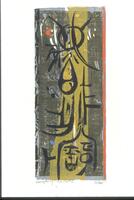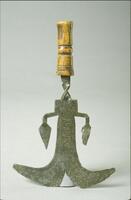11 UMMA Objects
11 UMMA Objects
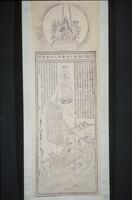
Chinese (Chinese (culture or style))
Amitabha (Ch. Amitofou) rescues sailors at sea
19th century
Gift of Robert and Frances Wagner
1980/2.179
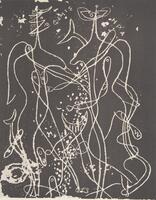
Artist Unknown
Figures with Greek Inscription
20th century
Gift of Professor Walter M. and Nesta R. Spink
2012/2.216
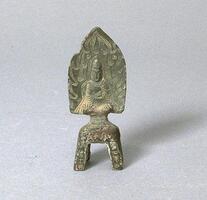
Chinese (Chinese (culture or style))
Buddha, seated, with mandorla and dais; inscription
515
Museum purchase for the James Marshall Plumer Memorial Collection
1964/2.96
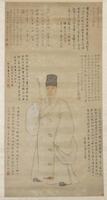
Zeng Jing (Tseng Ching)
Portrait of Pan Qintai
1621
Museum purchase made possible by the Margaret Watson Parker Art Collection Fund
1966/1.110
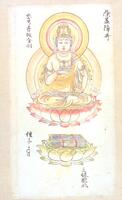
Takuma Tametō
Bodhisattva (Jokaisho Bosatsu): esoteric Buddhist iconographic drawing
1133 – 1166
Museum purchase made possible by the Margaret Watson Parker Art Collection Fund
1963/1.99
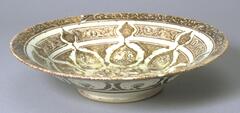
Iranian (Iranian)
Bowl with radial design and inscribed rim
1200 – 1232
Museum purchase made possible by the Margaret Watson Parker Art Collection Fund
1961/1.186
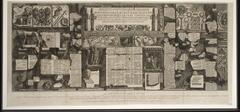
Giovanni Battista Piranesi (Italian (culture or style))
Senatus populusque Romanus / monumenta marmorea magistratuum / triumphorumque ab urbe condita ad / tempora divi Augusti ruderibus in foro / egestis eruta impensa Al ex(andri) Farnesii card(inalis) / Pauli III Pont(ificis) Max(imi) nepot(is) in Capitolio p(osita), from Piranesi's Lapides Capitolini (1762)
1762
Gift of the Ernst Pulgram and Frances McSparran Collection
2007/2.117
![The upper surface of this vessel features a circle with the Chinese character "je (祭: ancestral rite)" rendered inside in cobalt blue pigment. The tray features blemishes, while the rims show traces of use. The foot retains traces of coarse sand supports stuck to it during firing. This type of ritual vessel has been excavated from the upper sediment layers of waste deposits of kilns in front of what is now Bunwon-ri Elementary School in Gwangju-si, Gyeonggi-do. Such vessels are presumed to have been produced immediately before the Bunwon-ri kiln cloised down and to have been widely supplied to the general public. <br />
[Korean Collection, University of Michigan Museum of Art (2014) p.196] The upper surface of this vessel features a circle with the Chinese character "je (祭: ancestral rite)" rendered inside in cobalt blue pigment. The tray features blemishes, while the rims show traces of use. The foot retains traces of coarse sand supports stuck to it during firing. This type of ritual vessel has been excavated from the upper sediment layers of waste deposits of kilns in front of what is now Bunwon-ri Elementary School in Gwangju-si, Gyeonggi-do. Such vessels are presumed to have been produced immediately before the Bunwon-ri kiln cloised down and to have been widely supplied to the general public. <br />
[Korean Collection, University of Michigan Museum of Art (2014) p.196]](/media/W1siZiIsIjIwMjIvMDkvMjQvMmFnOWJwdG93eF9kZWZhdWx0LmpwZyJdLFsicCIsInRodW1iIiwiMjQweDIwMCJdXQ?sha=3e95848752f7e731)
Korean (Korean (culture or style))
Blue-and-white Ritual Dish with Inscription "Je (祭)"
19th century
Gift of Bruce and Inta Hasenkamp and Museum purchase made possible by Elder and Mrs. Sang-Yong Nam
2004/1.283
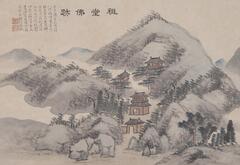
Gao Cen (Chinese (culture or style))
Buddha's Footprint at Zhutang Temple, from the album, Twelve Views of Jinling (Nanjing) (one of pair of albums)
1667 – 1799
Gift of Mr. and Mrs. C.D. Carter
1970/2.159.9
Loading…
